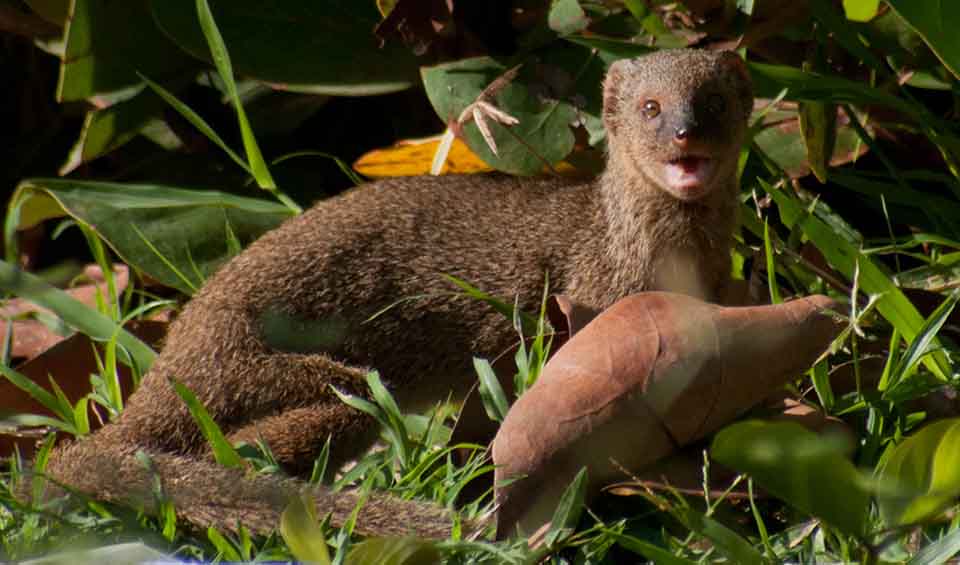Urva – Asian mongooses
Famous for their ability to take on venomous snakes like cobras
A group of small, sleek carnivorous mammals native to Asia, including regions of South Asia, Southeast Asia, and parts of East Asia. Members of this genus are often seen as agile, alert, and clever hunters. These mongooses have adapted to a wide variety of habitats, from forests and grasslands to farmlands and even urban edges.
Mongooses in the Urva genus are generally small to medium-sized, with elongated bodies, short legs, and bushy tails. They have pointed snouts, sharp teeth, and a coat that ranges from grayish to brown, often speckled or striped depending on the species. Their fur is coarse, and their eyes are sharp and expressive, giving them a constantly alert appearance.
These mongooses are opportunistic predators, feeding on a wide range of prey, including insects, rodents, reptiles, birds, amphibians, and even eggs. Some species, like the crab-eating mongoose, also forage near water for crabs, frogs, and fish. They are mostly diurnal, meaning they’re active during the day, and are known for their quick reflexes, sharp senses, and boldness when hunting — especially their legendary ability to battle venomous snakes, thanks in part to their agility and resistance to some snake venom.
The small Indian mongoose (Urva auropunctata) has been introduced to many islands — including in the Caribbean and Pacific — to control rats and snakes. Unfortunately, it often became an invasive species, preying on native birds, reptiles, and mammals, and causing significant harm to local wildlife. Another interesting note is that mongooses are known to use tools in some cases and have been observed breaking open eggs or shells by throwing them against rocks — a rare behavior in mammals.
Species in this genus
Small Indian mongoose
Famous snake-fighter — with strategy


